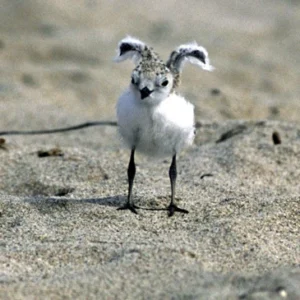
When Sandoval assumed responsibility for COPR in 1998, she quickly found a degraded habitat with “lots of problems,” she recalls. Invasive species were crowding out native plants that keep the dune ecosystem healthy; walking trails disrupted wildlife and plants; bird species like the plover and least tern were in decline or had virtually vanished, along with the badgers, deer, and large mammals that once lived along the coast.
Lafferty, who is affiliated with UCSB and the U.S. Geological Survey, laid the scientific foundation for the reserve’s rebirth by carefully documenting the main factor behind the birds’ decline. “It was humans,” says Sandoval. “People were walking all over the beach, and the plovers could not find a spot to nest without some disturbance.” Predation played a much smaller role.
She developed a management plan that confronted the interlocked problems with a continuing habitat restoration effort, educational public outreach, docent training, and plover protection. The docents’ powers of persuasion and some 2,500 feet of rope fence that symbolically separated humans and plovers were key elements.
Many fellow scientists doubted it was possible to bring back an abandoned breeding site. It had never been done before, they said. Read the full article

Leave a Reply
You must be logged in to post a comment.